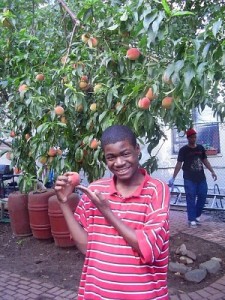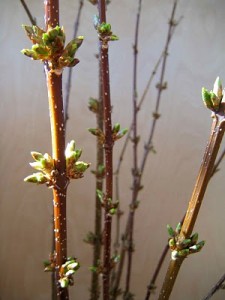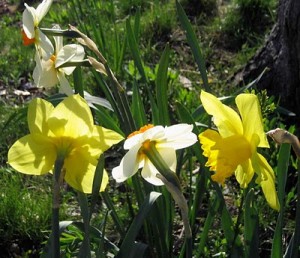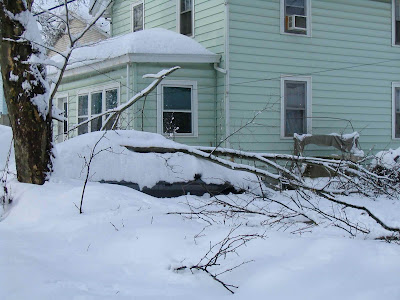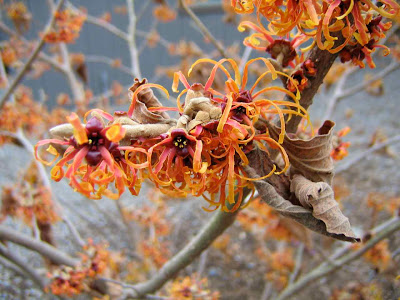In my first post for this series on “surviving the winter by staying connected to nature,” I alluded to the health benefits of getting your butt off the sofa (or office chair) and into the great outdoors. Several people left comments on this blog, as well as on
Facebook and
twitter, that what keeps them sane and healthy in the winter is getting outside. So let’s talk about that. Why is getting outdoors so important?
Reason #1: Sunlight (or “take you vitamins!”)
Sunlight provides several essential ingredients for good health:
a. The first is Vitamin D. The sun contributes significantly to its production in our bodies, which aids in the absorption of calcium, which helps maintain strong bones. Vitamin D helps to prevent osteoporosis, as well as hypertension (high blood pressure), cancer, and several autoimmune diseases. Rickets (remember rickets? Kids are getting rickets again! Gee, I wonder why…) and osteomalacia are common D deficiency diseases. Yuck. So get outside for some sunlight.
As little as 10 minutes of exposure a day is thought to be enough to prevent Vitamin D deficiencies.* In the winter, when the sun is low and most of our bodies are bundled up, we may need a little longer than 10 minutes. I try to get out at mid-day when the sun is highest. This works out well for lunch hour; rather than scarfing down that sandwich in front of your computer, throw on your coat (and gloves, and scarf, and hat…) and take a walk. Ten bucks says you’ll feel more energetic and better able to focus for the rest of the day (there’s research to back this up, too, but I’ll cover that another time).
b. Normal
circadian rhythms – Exposure to sunlight helps us to maintain our internal biological clocks, which in turn helps us sleep. When bright light enters our eyes, it stimulates our “circadian pacemaker” (I kid you not). This little pacemaker signals the brain to stop making melatonin, the hormone that makes us sleepy. There’s a good amount of
research now that
maintaining normal circadian rhythms in people with Alzheimer’s and other forms of dementia can improve sleep and decrease restlessness, agitation, and even aggression. Lack of sunlight also causes the “winter blues,” otherwise known as Seasonal Affective Disorder (SAD). This depression is recognized by the medical community. But instead of upping your dose of anti-depressants or buying one of those light therapy lamps,
try getting some natural sunlight first (disclaimer here about my not being a doctor and that if you need more than the sunlight cure, you should seek medical advice).
c. Spending time outdoors early in life may even help to
prevent myopia (nearsightedness). Click
HERE to read or listen to the story by Joseph Shapiro on NPR, and click
HERE to read the article “What’s Hot in Myopia Research” by presented Neville A. McBrien, Ian G. Morgan, and Donald O. Mutti at the 12th International Myopia Conference in Australia, July 2008. I just love that title, “What’s Hot in Myopia Research.”
Reason #2: Exercise
We all know by now that exercise is good for our physical and mental/emotional health, right? So if you can do it outside while getting your daily Vitamin D intake and your circadian rhythms adjusted all at the same time, you’re golden. Even mild exercise, like walking, is beneficial. And then of course there’s skiing, snowboarding, ice skating, snowshoeing, curling… perhaps watching the
winter olympics will inspire.
Reason #3: Emotional well-being
When we experience positive stimuli, endorphins (chemicals that make us feel good) are released. Our outdoor experience is usually positive on a multi-sensory level, which means that more than one sense is being stimulated, in a good way, at the same time. We feel the sun’s warmth on our face as we listen to birds chirping (yes, even in winter) and see snowflakes falling, or our dogs romping, or our children making snow angels. For more on this, read
my interview with Esther Sternberg, author of
Healing Spaces: The Science and Place of Well-Being.
Researchers
Stephen and Rachel Kaplan figured this out long before neurologists had the brain imaging technology to prove it. They believe that nature holds our attention through “soft fascination” rather than the kind of concentration and fight-or-flight attention needed when we’re working or walking along a busy city street (for more, see
this blog post). Studies by
Roger Ulrich and others have found that interacting with and even just viewing nature can help people recover from stressful events. And really, who isn’t under some degree of stress these days? So go outside. Your body will thank you.
There is a caveat to all of this: Be safe!
Here are some tips to staying warm and safe from the
National Wildlife Federation and Outdoor Afro (
Part I and
II). Sometimes, due to the weather or one’s physical condition, getting outside isn’t an option. I received this comment from a reader, and she definitely has a point:
Getting outdoors every day helps pass the winter. The only problem we encounter here is that the temperatures can drop to the point where being outdoors for more than a few minutes is not a good idea. What many people here do is go to the city gym and track. It’s a great meeting place and a way for us to avoid falling on ice and climbing big snowbanks. It’s better than being housebound for many elderly and disabled persons, including me.
In the next post, I’ll talk about more that we can do indoors on those days when venturing out isn’t possible. And then, before you know it, it’ll be spring!
And speaking of which, here’s another comment I got about fighting the winter doldrums:
“I go outside…and look for signs of spring.” And here’s a picture from one of our members, who did just that and found the first yellow crocus of spring.
*My source for the Vitamin D information was an article on
MayoClinic.com.
